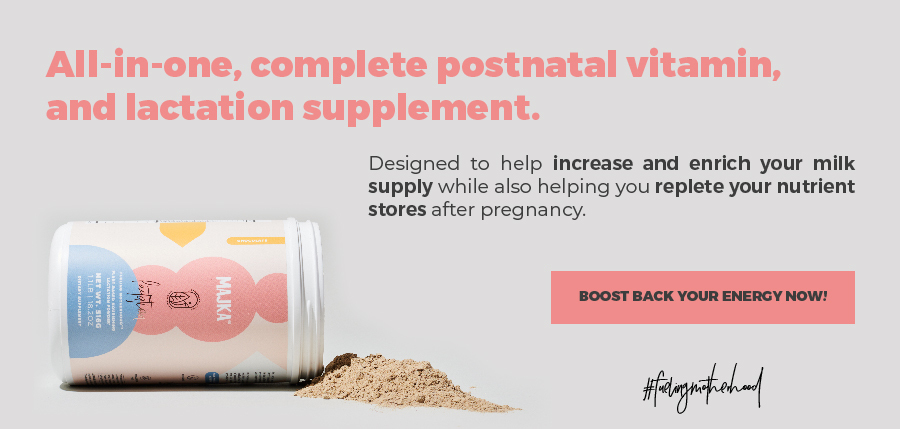
Whether you are returning to work, are trying to get your partner or any other family members to participate in the feeding process of your kid, or are looking forward to a more flexible feeding schedule… there are plenty of reasons that can lead you to choose introducing formula to a breastfed baby. All arguments behind this decision are totally valid and should not leave you feeling like you are making a selfish choice or failing to be a good mom, as formula is a good substitute that will provide your baby with all the nutrition they need to grow healthy and thrive.
Making the transition from exclusive breastfeeding to supplemented feeding can be a challenging event, and in order to help you live a smoother experience, we have gathered information on introducing formula to a breastfed baby, giving you some useful insights on how and when to do it, tips to begin mixed feeding, the challenges you could face during this process and more.
Starting formula feeding
Even though you can start introducing formula to a breastfed baby at any time, consider that mommy’s milk is recommended as the only nutrition source for babies up to 6 months. If not possible, professionals recommend that infant formula enters the nutrition equation when your baby is at least three to four weeks old, as breastfeeding is going to help you maintain a regular and solid milk supply and your baby will have developed a solid feeding schedule.
If your reasoning behind picking a supplemented diet for your baby is that you think they are not getting enough milk, we strongly recommend you talk first to your family doctor or lactation consultant, as they will know what could be the best option for you. Some signs of concern you should look for to consider supplemental formula are:
- Abnormal weight loss in newborns: Some infants will lose weight after they are born. Anything greater than a 10% weight loss is a red flag during the first 5 days of life, but consider that by the time they are 2 weeks old, they should weigh around the same they did when they were born. Many factors including birth type or amount of IV fluid in labor can affect a baby’s weight.
- Low amount of wet diapers: Once your baby is 5 days old, you should be expecting at least six full, wet diapers in a 24-hour period.
- Moodiness: If your baby seems fussy or lethargic most of the time, this could be a sign of concern.
- Very short or very long breastfeeding sessions: One sign that your baby may not be getting the right amount of milk from your breast is if they are nursing for less than 10 minutes or more than about 50 minutes at a time.
Bottle-feeding insights
If you have never given your baby a bottle before, this is going to be a process you both will have to adapt to, so patience is going to be key. You can start introducing formula by offering bottles filled with around half an ounce to get them used to the flavor and flow.
To start transitioning to formula, we recommend you do it gradually, in order to make a smooth replacement from breast to bottle for you and your baby. Choose specific feeding times where your baby is happy and relaxed. Around two hours after their last feeding, they will be hungry enough to accept a bottle but not too hungry to be easily frustrated and refuse the bottle, sometimes too hungry babies can get more frustrated. Every baby will be different, some babies do better with the bottle as “dessert” or the bottle between breasts – breast, bottle, breast. If your baby still refuses to eat from the bottle, do not force them to drink from it and try again later. Any lactation consultant can help with bottle refusals.
For exclusively breastfed babies, it is recommended to use bottles with slow flow nipples that mimic the shape and flow of your own nipples to decrease the chance of overfeeding as bottle-feeding provides a continuous flow of milk. Learn more about paced bottle feeding watching this video.
When bottle-feeding, these are some signs that your baby could show that mean they have had enough milk:
- Turning away or pushing away the bottle
- Spitting out milk
- Chewing on the nipple
- Gagging
- Falling asleep
Challenges to keep in mind
Mixing breastfeeding with bottle-feeding might lead you to face some complications, although most of the time these situations can be easily solved, it is important to keep them in mind to seek the help of an expert as soon as they appear:
- Supply concerns: When introducing formula to a breastfed baby, your body will respond to the reduced necessity of producing milk. To regulate your milk supply, keep a frequent rhythm of breastfeeding or pumping–up to 8 to 12 times a day.
- Feeding strikes: Some babies transition well between breast and bottle, others develop a preference for one or the other. If your baby is resisting breastfeeding, go back to basics: skin to skin and natural breastfeeding positions. We recommend you pause bottle-feeding for around a week and to use your hand to express a little bit of milk before trying to latch your baby onto your breast for them to have immediate access to milk after latching. If the bottle is being refused, try warming the milk bottle and its nipple to make the experience more similar to breastfeeding, try different positions, milk temperatures and times of day. Ask for help from a lactation consultant on both matters.
- Digestive problems: Keep in mind that infant formula is not digested as easily as breast milk, so it is possible that your baby could experience some digestive discomfort that could lead to effects like colic or constipation.
- Breastfeeding issues: Cutting down on breastfeeding may cause breast engorgement and clogged milk ducts. To avoid this problem and the risk of developing mastitis, express milk from your breasts using your hands or pump constantly. Try reducing breastfeeding/pumping sessions gradually. Express milk with your hands or pump to comfort if there is engorgement.
Reaching the sweet spot when turning to a supplemental diet is not the easiest and can take some time for you and your baby to adapt. During this period, being patient is important. If you feel lost at times, you can reach out to a lactation consultant to help you find solutions for your concerns, and remember that you are not alone during this process. Remember to follow Breastfeeding 101 to not miss our content and to answer all your doubts on lactation.
If you still have some doubt about introducing formula to a breastfed baby, we recommend you visit these resources:
How to Feed a Combination of Breast Milk and Formula | The New York Times
Combination feeding – Breast milk and formula | HSE
Breastfeeding and supplementing with formula | Babycenter
Weaning Your Baby: Switching From Breast Milk to Formula | Forbes Health
Establishing Your Milk Supply | La Leche
Annie Rueb





